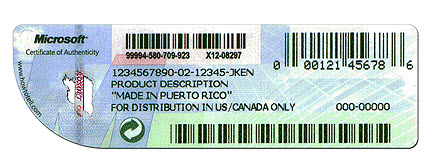Microsoft reiterates no Windows 10 free upgrade for Non-Genuine users

The definitive statement is in: Microsoft will not be offering consumers who are running Non-Genuine versions of Windows 7 and 8.1 a free upgrade to Windows 10 for the first year the operating system is available.

Back in March, following a Reuters report claiming that Myerson said Microsoft would offer those running Non-Genuine Windows the opportunity to upgrade to Windows 10 in the first year for free, Microsoft execs were working overtime to clarify what they claimed was a misunderstanding of the company's stance.
Microsoft announced in January plans to offer consumers and some business users the opportunity to move from Windows 7, Windows 8.1 and Windows Phone 8.1 to Windows 10 for the first year Windows 10 is available.
The one still somewhat squishy statement in today's blog post about Genuine vs. Non-Genuine Windows offers is this:
"While our free offer to upgrade to Windows 10 will not apply to Non-Genuine Windows devices, and as we've always done, we will continue to offer Windows 10 to customers running devices in a Non-Genuine state."
This could possibly mean Microsoft will allow these users to move to a Non-Genuine Windows 10 version for free -- one that has a specific watermark and continues to nag them regularly about running a non-Genuine copy.
It might also mean -- or alternatively mean -- that Microsoft will be sending the same "Windows 10 is now available" notifications to Non-Genuine Windows 7 and 8 users that Genuine users will see. These notifications are designed to try to make plainer to existing users when and how they can move to Windows 10.
More Windows 10
Earlier this week, some reports about these planned notifications called them nagware and adware. My colleague Ed Bott detailed how the "Get Windows 10" advertisements will work a month ago. Bott said: "I have a hard time seeing this as adware. It is, instead, perfectly targeted advertising, offering a free upgrade to a product currently running on the system where the ad is being displayed."
I asked Microsoft for clarification about these notifications and received the following statement:
"As we currently do with Windows Update today, we will notify customers in product with details about how to get their free upgrade to Windows 10. These notifications will provide more details and customers can turn them off at any time."
Today's blog post also hints that Microsoft has more upgrade incentives up its sleeves that are designed to try get Non-Genuine users onto Windows 10.
From the blog post:
"In partnership with some of our valued OEM partners, we are planning very attractive Windows 10 upgrade offers for their customers running one of their older devices in a Non-Genuine state. Please stay tuned to learn more from our partners on the specifics of their offers."
I'm betting whatever these deals are, they involve OEMs in China, based on another statement Reuters said Myerson made back in March. Reuters said Myerson told the organization that Microsoft had a plan to "re-engage" with the hundreds of millions of users of Windows in China, without offering further details at that time.
Non-Genuine Windows copies are not always pirated copies. Sometimes users unknowingly purchase Windows copies that certain resellers or retailers are passing off as legal, which are counterfeit and/or tampered with. Sometimes there are false positives, via which legal copies of Windows show up as illegally licensed.
If a copy of Windows is identified as "Non-Genuine," users see repeated notifications meant to push them to remedy the situation so their copy of Windows will be validated.